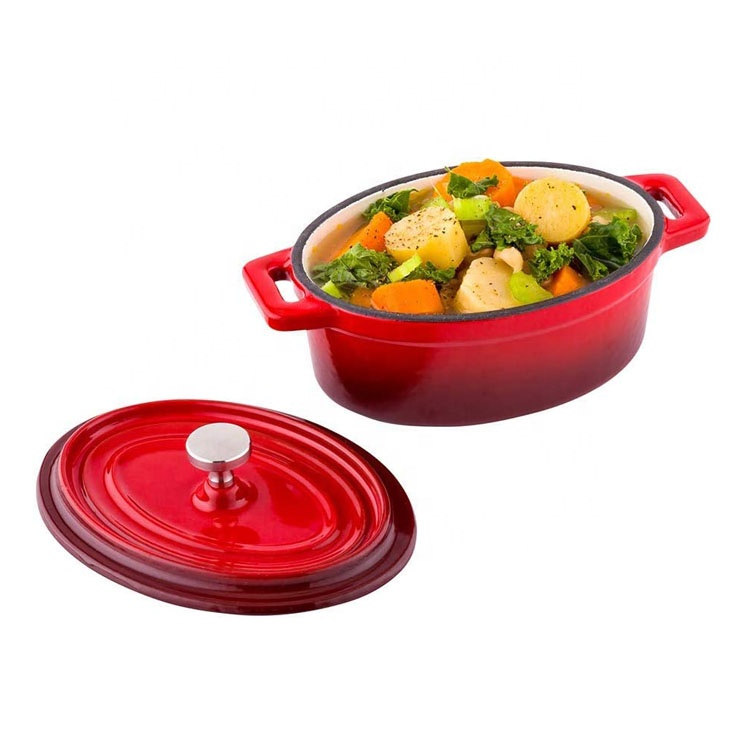
cast iron dutch oven pot
The Timeless Charm of Cast Iron Dutch Ovens
In the realm of cookware, few items hold the same charm and functionality as the cast iron Dutch oven. Renowned for their versatility and durability, these heavy, thick-walled pots have been a staple in kitchens for centuries. Whether you are a novice home cook or a seasoned culinary expert, a cast iron Dutch oven can elevate your cooking game to new heights.
History and Craftsmanship
The origins of the cast iron Dutch oven can be traced back to the early 18th century. The term Dutch oven is believed to have been derived from the advanced casting techniques developed in the Netherlands. Craftsmen created these heavy pots with a tight-fitting lid, designed to retain moisture and heat efficiently. Over time, the design caught on in other parts of Europe and eventually made its way to America, especially among pioneers who appreciated its practicality for outdoor cooking.
The craftsmanship involved in producing these ovens is part of what gives them their enduring appeal. Traditional cast iron Dutch ovens are crafted by pouring molten iron into molds, which creates a solid cooking vessel that can last for generations when properly cared for. Many brands, such as Le Creuset and Lodge, continue to produce high-quality Dutch ovens that showcase both beauty and functionality.
Versatility in Cooking
One of the remarkable features of a cast iron Dutch oven is its versatility. It can be used to sauté, sear, simmer, braise, bake, and even fry. From hearty stews and soups to artisan bread and roast meats, the possibilities are endless. The pot's ability to retain heat allows for even cooking, while the tight-fitting lid traps moisture, enhancing flavors and tenderness in dishes.
cast iron dutch oven pot

Home cooks appreciate that a Dutch oven can transition seamlessly from the stovetop to the oven. This capability makes it perfect for recipes that require both browning and slow cooking. For example, you can sauté your vegetables and meat on the stovetop, then transfer the pot to the oven to slowly braise a delicious lamb shank or pot roast.
Health Benefits and Flavor Enhancement
Another advantage of cooking with cast iron is the health factor. When seasoned correctly, cast iron cookware can add small amounts of iron to your food, an essential nutrient that many people lack in their diets. Using a Dutch oven also promotes wholesome cooking techniques; it often requires less added fat compared to other cooking methods.
Moreover, recipes cooked in cast iron tend to develop deeper, more complex flavors. The material itself can contribute to a better cooking experience, as it can develop a natural non-stick surface over time with proper seasoning. This makes it ideal for achieving that coveted crust on bread or a perfect sear on meats.
Care and Maintenance
Caring for a cast iron Dutch oven is relatively straightforward, but it does require some attention. It's essential to keep it seasoned by applying a thin layer of oil after each use, which helps maintain its non-stick qualities and prevents rust. Contrary to popular belief, washing in soapy water is not a must; instead, a simple rinse and scrub with a non-abrasive sponge usually suffices.
In conclusion, a cast iron Dutch oven is more than just a cooking pot; it’s a culinary companion with a rich history and unmatched versatility. From households to professional kitchens, its ability to enhance flavors and promote healthy cooking makes it a worthy investment. Whether you are simmering a rustic stew or baking crusty bread, a cast iron Dutch oven remains a timeless tool that promises to deliver delicious meals for years to come.
-
Season Cast Iron Perfectly with GPT-4 Turbo TipsNewsAug.01,2025
-
High Quality Cast Iron Cookware - Baixiang County Zhongda MachineryNewsAug.01,2025
-
Premium Cast Iron Pan: Durable & Perfect HeatNewsAug.01,2025
-
High Quality Kitchen Durable Black Round Cast Iron Cookware Pancake Crepe Pan-Baixiang County Zhongda Machinery Manufacturing Co., Ltd.NewsAug.01,2025
-
Cast Iron Cookware - Baixiang County Zhongda Machinery | Nonstick, Heat ResistanceNewsAug.01,2025
-
High Quality Kitchen Durable Black Round Cast Iron Cookware - Baixiang County Zhongda Machinery | Non-Stick, Heat Retention, DurableNewsJul.31,2025


